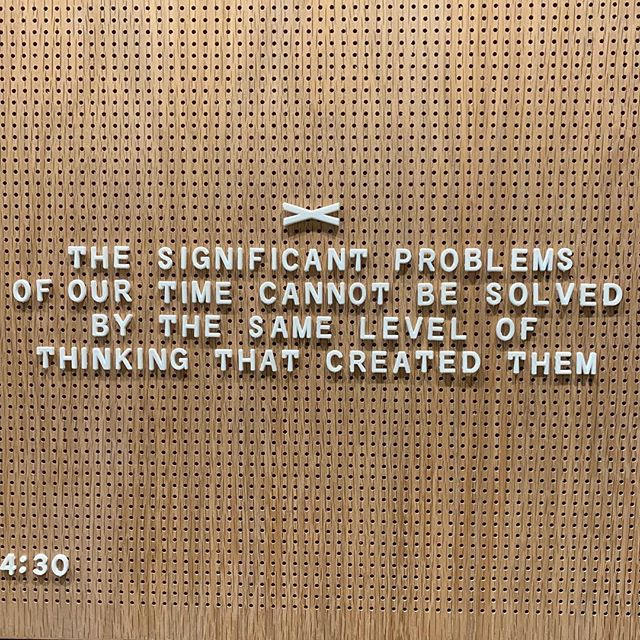|
|
|
Archive for the 'Business info' Category
Monday, January 27th, 2020

Poking through 14+ years of posts I find information that’s as useful now as when it was written.
Golden Oldies is a collection of the most relevant and timeless posts during that time.
I wrote this in 2015, but when it comes to company culture five years is a blink of the eye. The boss’ MAP (mindset, attitude, philosophy™) that drives the actions that create culture, whether the result is good or bad, has been developing since they were born, although it’s not set in concrete and can change — but only if they choose to.
Read other Golden Oldies here.
Steve Blank wrote a great post about changing culture in larger organizations. It’s a must-read for anyone in business, government or non-profit who is looking to juice innovation in their organization.
Blank agrees that there are four components to culture.
Two McKinsey consultants, Terry Deal and Arthur Kennedy wrote a book called Corporate Cultures: The Rites and Rituals of Corporate Life. In it they pointed that every company has a culture – and that culture was shorthand for “the way we do things at our company.” Company culture has four essential ingredients:
-
- Values/beliefs – set the philosophy for everything a company does, essentially what it stands for
- Stories/myths – stories are about how founders/employees get over obstacles, win new orders…
- Heroes – what gets rewarded and celebrated, how do you become a hero in the organization?
- Rituals – what and how does a company celebrate?
He goes on to explain what needs to be done for “innovation to happen by design not by exception.”
While I agree with everything he says, I believe he left out a most critical component.
In reality it should be a subset of values/beliefs, but it is rarely thought about by bosses — they either do it or do the opposite automatically.
It can be summed up in four words, don’t kill the messenger—Pete Carroll, coach of the Seattle Seahawks, is a master of this mindset.
To be truly innovative means trying new stuff and a part of trying new stuff is accepting that it won’t always work.
Corporate culture in general and many bosses individually can’t seem to wrap their minds around the idea that some things will fail — it’s the dark side of the ‘but me mindset’ at work.
What they, and anybody setting out to change culture and encourage innovation, need to understand is that it only takes killing the messenger, i.e., responding negatively to the person who brings bad news, once to negate whatever progress had been made and put the effort back to square one.
Flickr image credit: Eirik Newth
Posted in Business info | No Comments »
Wednesday, November 6th, 2019

Do you hate it when roads you travel often are torn up for weeks/months in order to repave them?
I do. I also hate the pollution manufacturing asphalt causes, not to mention the choice between driving on potholes or seeing my taxes paying to do the same road over and over.
Things are about to change — finally!
“New synthetic binders are going to transform the global road construction or road rehabilitation marketplace, and they’re going to allow for roads to be 100% recycled,” says Sean Weaver, president of TechniSoil Industrial, the company that designed the new process. “That’s always been the holy grail of the road construction market—could you recycle 100% of the top surface of the road, grind it up, crush it, and put it right back down, and have that be as durable as the original hot mixed asphalt road.”
Even better, the process uses recycled PET plastic (think water bottles) to replace bitumen and the result is far stronger than the original.
Considering the fact that so much US infrastructure, especially roads/streets/highways are badly deteriorated TechniSoil’s innovation couldn’t come at a better time.
After it’s tested in LA the main problem will be getting (forcing) bureaucracies and politicians to use it.
And that means overcoming entrenched players, with powerful lobbying and money to buy the pols.
Image credit: TechniSoil Industrial
Posted in Business info | No Comments »
Wednesday, October 30th, 2019

No matter how much you earn you are still a slave.
A slave with many masters.
Enslaved by free stuff.
And sold to a myriad of buyers.
Image credit: Paul Downey
Posted in Business info | No Comments »
Monday, September 30th, 2019

Poking through 13+ years of posts I find information that’s as useful now as when it was written.
Golden Oldies is a collection of the most relevant and timeless posts during that time.
Last week’s look at the “new” Microsoft reminded me of a previous post that’s especially apropos in light of unicorn valuations crashing headlong into the reality of investor focus on profitability.
Read other Golden Oldies here.
A Friday series exploring Startups and the people who make them go. Read all If the Shoe Fits posts here.
Neither market cap nor valuation are cause for celebration.
Both are as ephemeral as morning fog.
Ask Microsoft CEO Satya Nadella his reaction when Microsoft became the most valuable company in the world for a few months last fall.
“I’m not one of those guys who says, ‘let’s celebrate some market cap measure.’ That’s just not stable.”
What does interest him?
The Microsoft-generated ecosystem.
“Our business model is about creating more surplus outside us. We will only be long-term success when the people are making more money around us,” he said.
This dovetails with what Bill Gates also believes, i.e., a company’s success is defined when the total value of the ecosystem around it is more valuable than the company that created it.
That ecosystem seems non-existent to the majority of founders of gig economy businesses, dating apps, social media, etc.
Or perhaps it’s just those with venture funding who are focused on growth at all costs.
That said, this post is dedicated to the founders who focus on building sustainable businesses/ecosystems.
As opposed to the fools who chase investment in lieu of revenue, celebrate valuation based on their last round of funding, and don’t care about ecosystem beyond its PR value.
Image credit: HikingArtist
Posted in Business info | No Comments »
Monday, June 24th, 2019

Poking through 13+ years of posts I find information that’s as useful now as when it was written.
Golden Oldies is a collection of the most relevant and timeless posts during that time.
KG wrote this five years ago and, sadly, many of the concerns he mentioned are happening. AI bias is rampant and, as usual with emerging tech, most people don’t know/understand/care about the danger that represents.
Read other Golden Oldies here.
A few months ago I read the book, Our Final Invention: Artificial Intelligence and the End of the Human Era by James Barrat. It was a tremendously interesting book and confirmed many of the concerns I’ve been having about my own industry for some time. Subsequently there have been a slate of articles wondering about AI and how the industry is progressing.
One of the book’s premises was that we need to take a step back and think about the moral and ethical basis of what we’re doing and how and what we’re imparting to these machines.
I believe that it will be difficult, or impossible, for the AI industry to change direction mid-streams and start being concerned about morality and ethics. Most of the funding for AI comes from DARPA and other such institutions that are part of the military and affiliated organizations. Finance is second largest funding source.
Most of the people who are concerned about AI (including James Barrat) worry about when machines gain human level intelligence. I am much more concerned about what happens before that. Today it is said that the most sophisticated AI has the intelligence of a cockroach. This is no small feat, but it also brings with it some clear implications – cockroaches have important drives and instincts that guide their behavior. Survival, resource acquisition, reproduction, etc. are all things that cockroaches do. How far away are we from when our AI exhibit these characteristics? What about when we get to rat-level intelligence?
At that point machines will be very powerful and control many of the essential functions of society. Imagine a frightened rat (or 6 month old toddler) with infinite power – what actions would they take to protect themselves or get what they perceive they want or need? How would they react if we stood in their way? How concerned would they be with the consequences of their actions? Most adults don’t do this today.
Before we achieve human level intelligence in machines, we’ll have to deal with less intelligent and probably more dangerous and powerful entities. More dangerous because they will not have the knowledge or processing power to think of consequences, and also because they will be controlling our cars, airplanes, electricity grids, public transportation and many other systems.
Most AI optimists ignore the dangerous “lower mammal, toddler and childhood” stages of AI development and only see the potential benefits at the end. But we need to think about the path there and what we can do to prepare as individuals and as a society.
Not to speak about the fact that once we reach human level intelligence in AI, we’ll be dealing with an intelligence that is so alien to anything we know (after all, we have lots of experience with cockroaches, rats and toddlers), and no way of knowing what its motives are. But that will be left for another discussion.
Posted in Business info | No Comments »
Monday, May 27th, 2019

Poking through 12+ years of posts I find information that’s as useful now as when it was written.
Golden Oldies is a collection of the most relevant and timeless posts during that time.
Are you ready for Memorial Day? For the year to be almost half over? I’m not. That said, I’m going to enjoy the day and hope that at least one of these links will add to yours.
Read other Golden Oldies here.
This Memorial Day I thought I’d share links to favorite past posts.
Memorial Day 2012 links you to a look at vets and entrepreneurship.
Memorial Day 2011 shares a poem on who provides the basis of your life, no matter your beliefs or ideology.
Heroes and Memorial Day 2010 looks at fools, with my father as the example.
Memorial Day: Now And Future 2009 takes a graphic look at a future I’m sure I won’t live to see.
And while you’re enjoying yourself today, take a moment and give thought to all those who made it possible to enjoy the sales, food, beer and whatever else you indulge in today.
As a sign near me says, “The home of the free because of the brave.”
Image credit: vladeb
Posted in Business info | No Comments »
Friday, May 3rd, 2019

After writing this blog for 13+ years I’ve decided that I’m entitled to a summer schedule.
Therefore, from now until Fall, Mapping Company Success will publish Monday, Tuesday and Wednesday.
The rest of the time will be spent on getting my act together
May your summer will be as enjoyable as mine (I hope) will be productive.
Image credit: Animated Heaven
Posted in Business info, Communication | No Comments »
Monday, February 4th, 2019

Poking through 12+ years of posts I find information that’s as useful now as when it was written.
Golden Oldies is a collection of the most relevant and timeless posts during that time.
I read an interesting article from Wharton on the current trend of ghosting by both candidates and employees (more on that later in the week). Today’s Oldies are kind of the yin and yang of finding and keeping people who aren’t likely to ghost.
Read other Golden Oldies here.
Talent in good times and bad (2008)
The people market is tightening (again), and the pundits are arguing (again) over whether there actually is a shortage of qualified people to fill openings across industries, especially high tech.
Is there really a shortage? Does it matter?
If there is a perceived shortage (i.e., jobs aren’t being filled), then companies will continue to fret over finding qualified people and managers will continue to worry that a lack of talent will damage their own careers.
During the most recent downturn there was an abundance of talent available as has happened in the past; for example
- The early nineties, when a typical ad for a software engineer in Silicon Valley drew 100-plus viable responses.
- Post-October 1987, when a financial services ad would easily draw five hundred qualified responses.
- The early seventies, when an ad for a microwave designer ran in the Sunday San Jose Mercury and over three hundred qualified engineers started lining up at 6 AM Monday morning to wait for the company’s doors to open.
It is neither the surplus of talent in a down market, nor the dearth of it in a tight market, that creates a staffing problem. Rather it is the attitude of many managers that if the person is not already working there must be something wrong.
In the Eighties the thought was “There must be something wrong; companies only lay off their deadwood.” In the late Nineties, it was, “There must be something wrong or this candidate would already have a job.”
Frequently the source of such attitudes is managers’ lack of confidence in the ability to make good hiring decisions. By hiring currently employed people, managers unconsciously can validate a positive hiring decision (must be good or she wouldn’t be there) or excuse a hiring mistake (assumed he was good because he was at XYZ).
Why the prevalence of this rarely-discussed-almost-never-admitted lack of hiring confidence? Why is staffing, with all its associated pieces, one of the most disliked of all management tasks?
Simply stated, most people don’t like doing things when they don’t feel competent and it is difficult to feel competent doing an intricate task for which you’ve had little-to-no training.
Staffing involves many tasks
- developing detailed reqs,
- screening resumes,
- doing substantial, time-saving phone interviews,
- creating and mentoring an interviewing team,
- interviewing,
- crafting an offer,
- closing and landing the candidate,
- avoiding post-acceptance pitfalls, and
- a myriad of other details.
Above all is the need to hire correctly; in other words, to hire the right person at the right time for the right reasons. To do it well requires sophisticated, proactive, real world-based training geared specifically to line managers.
Instead, much of the available training is geared to having an HR department or using an outside recruiter; is too mechanical; or is comprised of general psychology information.
When there is an abundance of highly qualified candidates it’s a result of the economy, not of a surplus of people.
Population demographics, baby bust to retiring Boomers, guarantee hard hiring times for a decade at least. To assure their ability to meet the staffing challenges of the twenty-first century companies and managers need to work together to
- create an efficient, proactive hiring process;
- build internal sourcing skills that work in any labor market;
- raise hiring skills to the level of core competency; and
- disseminate them throughout the organization.
The winners of the future will be the companies that can fill their needs from the available labor pool, whatever the size, and the managers whose hiring skills allow them to confidently recognize talent, no matter the source.
Boom Or Bust, People Availability Is Not The Real Problem (2006)
Talent availability goes up and down, up and down all through the town—and the country and the world.
Thanks to a strong global economy and an aging population talent has been in short supply for awhile, so if the economy slows and more talent becomes available staffing should be easier—right?
Not really. It was still difficult during the last recession when all the information channels were saying that there was an abundance of well trained, highly qualified workers available.
A looser talent pool doesn’t mean that it’s easier to hire.
And it sure doesn’t mean that turnover is less costly, because the 80/20 rule still holds true.
The overt costs (20%) during good times include recruiters, relocations, and over-sized salaries/sign-on bonuses and they all but go away during lean times.
But the covert costs (80%), including interviewers’ time, slipped schedules, lost opportunities, lost productivity, and lowered morale, are still present.
Hiring itself isn’t easy, either. In 1999, an ad might generate 80 responses, 90% of which weren’t a fit; in 2002 the same ad generated 500 responses, but 90% still didn’t fit.
Other fundamentals don’t change, either.
- A corollary of Murphy’s Law states, “No matter the condition of the labor market, the specific skills being sought by any given company at any give time will be
a. the least available skills
or
b. the same skills that are being sought by every other company,
- No matter how long or hard you work, your organization will not meet its objectives without the right talent.
- A manager’s raises, bonuses, stock options, and even job, depend on the ability to hire the right person, at the right time, for the right reasons.
- Without the ability to hire and retain people in a timely, cost-effective manner, managers are gambling with their own success. After all: You are who you hire.
- People retention is critical, and retention is the result of good hiring practices.
The days of labor famine come and go, but even in days of labor feast, staffing is too costly to ignore good retention practices.
Image credit: Willi Heidelbach
Posted in Business info, Culture, Golden Oldies, Hiring, Retention | No Comments »
Monday, December 3rd, 2018

Poking through 11+ years of posts I find information that’s as useful now as when it was written.
Golden Oldies is a collection of the most relevant and timeless posts during that time.
I wrote this post in 2008, midway through the Great Recession (2007-2009), which lowered demand for talent and mitigated the expected people shortage. It took a decade, but the talent shortage is here with a vengeance — at all levels. Moreover, birth rates have fallen below replacement needs creating a demographic time bomb. One result is that bosses at all level need to become expert at managing a multigenerational workforce — not just managing, but also hiring outside their comfort zone if they want to stay staffed. More on that tomorrow.
Read other Golden Oldies here.
Great post by Steve Roesler over at All Things Workplace on How Age Impacts Your View of Life. It focuses on satisfaction and expectations at various stages of life. Click over, it’s well worth reading.
But what I wanted to discuss here today appeared near the end of the post.
“During the past few years we’ve seen the headlines for Talent Wars, Saving Institutional Knowledge and Learning, and Diversity. My experience so far with recent layoffs has been that workers nearing retirement are being offered packages to accelerate their decisions…I wonder if the decision-making maturity and collective knowledge of these newly “retired” workers will be irreplaceable and actually prompt a lengthening of the recovery process.”
Steve’s got a point about the recovery, but what if this mess hadn’t happened?
What if a normal down cycle had occurred? One that didn’t go global with the same vengeance; one that required only spotty realignment as opposed to wholesale layoffs.
Worker demographics have been a global concern for over a decade, but the MAP (mindset, attitude, philosophy™) and the corresponding skills needed to manage a multigenerational workforce haven’t improved nearly as much as was hoped.
Why? Is there a root to the problem (challenge, if you prefer) that should be addressed, but isn’t?
I have an idea about the root, tell me what you think.
I believe that one large piece of this problem stems from the relationship of parents and children and the difficulty of letting go and changing the paradigms.
Notice that ‘paradigm’ is plural, since there are several going on simultaneously; the major ones are
- older (parent), younger (child);
- peer (siblings/relatives) to peer;
- older (sibling/relative), younger (sibling/relative) and vice versa,
but there are multiple other minor configurations.
What I’ve found is that although there is no family involved, for many people the interaction styles are habitual, unconscious and happen across all ages with no discernible pattern.
If, in fact, this is a root problem how do we fix it? Other than a one-at-a-time approach I have no idea.
What are your thoughts regarding the validity of my hypothesis? What ideas do you have to address it?
Image credit: Wonder Woman
Posted in Business info | No Comments »
Wednesday, October 17th, 2018

Are you familiar with the song Where have all the flowers gone?
It was written by Pete Seeger, with additional verses added by others, and the full circle of the song is as valid today as it was when Seeger wrote it nearly 60 years ago.
The refrain at the end of each verse is “Oh, when will they ever learn? Oh, when will they ever learn?” and it became one of the best known protest songs of the Viet Nam War. Fast forward to today you find proof across the globe that we still haven’t learned.
That refrain also applies, with some rewording, to the war being waged between technical advances and consumer safety and security.
In September, Facebook hesitantly admitted that its access keys were hacked due to flawed code — a hack that potentially affected more than 50 million users, including Zukerberg and Sandberg.
Facebook explained that the hack was caused by multiple bugs in its code relating to a video-upload tool and Facebook’s pro-privacy “View As” feature. (…)
Most recently, a major flaw was found in the AI code used in personal assistants, such as Alexa, Siri, or Cortana.
Scientists at the Ruhr-Universitaet in Bochum, Germany, have discovered a way to hide inaudible commands in audio files (…) the flaw is in the very way AI is designed. (…) According to Professor Thorsten Holz from the Horst Görtz Institute for IT Security, their method, called “psychoacoustic hiding,” shows how hackers could manipulate any type of audio wave–from songs and speech to even bird chirping–to include words that only the machine can hear, allowing them to give commands without nearby people noticing. The attack will sound just like a bird’s call to our ears, but a voice assistant would “hear” something very different.
The “damn the security / full speed ahead” mentality isn’t anything new.
Nor is the greed that drives it.
There is an old saying, “Fool me once, shame on you. Fool me twice, shame on me.”
When will they ever learn?”
It’s likely the answer is “never.”
Image credit: koka_sexton
Posted in Business info | 1 Comment »
|
 Subscribe to
Subscribe to
MAPping Company Success
About Miki 
Clarify your exec summary, website, etc.
Have a quick question or just want to chat? Feel free to write or call me at 360.335.8054
The 12 Ingredients of a Fillable Req
CheatSheet for InterviewERS
CheatSheet for InterviewEEs™
Give your mind a rest. Here are 4 quick ways to get rid of kinks, break a logjam or juice your creativity!
Creative mousing
Bubblewrap!
Animal innovation
Brain teaser
The latest disaster is here at home; donate to the East Coast recovery efforts now!
Text REDCROSS to 90999 to make a $10 donation or call 00.733.2767. $10 really really does make a difference and you'll never miss it.
And always donate what you can whenever you can
The following accept cash and in-kind donations: Doctors Without Borders, UNICEF, Red Cross, World Food Program, Save the Children
*/
?>About Miki
About KG
Clarify your exec summary, website, marketing collateral, etc.
Have a question or just want to chat @ no cost? Feel free to write
Download useful assistance now.
Entrepreneurs face difficulties that are hard for most people to imagine, let alone understand. You can find anonymous help and connections that do understand at 7 cups of tea.
Crises never end.
$10 really does make a difference and you’ll never miss it,
while $10 a month has exponential power.
Always donate what you can whenever you can.
The following accept cash and in-kind donations:
|















